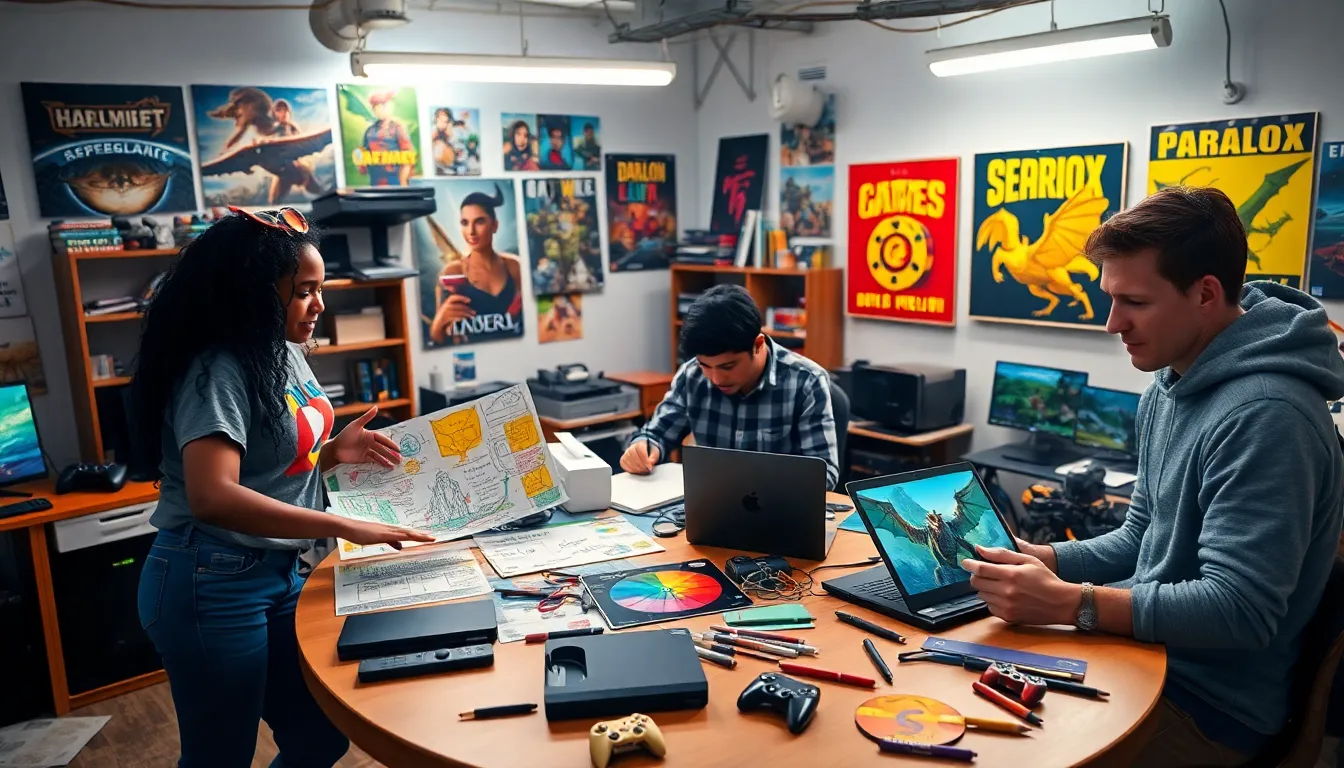Table of Contents
ToggleIn the realm of game development, countless resources inform and inspire creators at every stage of their journey. One such resource is the “Game Development Ramblings of a Gamer” archives, which serves as a treasure trove of insights, techniques, and lessons learned from real-world experiences in the gaming industry. This article delves into the intricacies of game development, the valuable themes presented in the archives, and the lessons that can drive successful outcomes in future projects.
Overview Of Game Development

Game development is a multifaceted process, combining various disciplines to create an interactive experience for players. It entails careful planning, design choices, and technical expertise, which together craft immersive worlds and engaging stories.
Key Stages In Game Development
The game development process typically follows several key stages:
- Concept Development: This initial phase focuses on brainstorming ideas, defining the game concept, and creating a basic narrative framework.
- Pre-Production: Here, developers outline the game’s design, including gameplay mechanics, character design, and setting. Prototypes may be built to test whether the concept is feasible.
- Production: The bulk of development occurs in this phase. Developers write the code, artists create visual assets, and sound engineers design audio elements.
- Testing: After production, the game undergoes rigorous testing to find bugs and ensure an optimal player experience. Quality assurance teams play a pivotal role in this stage.
- Release: Once polished and ready, the game is launched. Marketing strategies come into play here to reach target audiences effectively.
- Post-Release Support: After launch, developers often provide updates, downloadable content (DLC), and patches to maintain engagement and address issues.
Game Design Basics
At the heart of game development lies game design, which encapsulates everything from rules and objectives to storytelling and pacing. Effective game design is crucial in:
- Creating engaging gameplay loops that keep players returning
- Balancing difficulty levels to cater to both casual and hardcore gamers
- Establishing clear feedback mechanisms so players can track their progress
Programming Essentials
Programming transforms game ideas into playable experiences. Knowledge of various programming languages like C++, C#, or Java, and game engines such as Unity or Unreal Engine, is fundamental. Essential programming concepts include:
- Game Logic: Implementing rules and interactions within the game world
- Navigation: Regulating how characters and objects move within the environment.
- Networking: For multiplayer games, ensuring players can connect and interact seamlessly.
Art And Sound Integration
Art and sound serve as the aesthetic backbone of a game. Visual elements, including character models, environments, and animations, create the world players explore, while sound design enhances immersion through background music, sound effects, and voiceovers. Achieving a cohesive style and integrating these elements effectively are critical for player engagement.
Exploring The Ramblings Of A Gamer Archives
The “Ramblings of a Gamer” archives serve as an invaluable resource for those interested in both the technical and creative aspects of game development. This collection encompasses insights, ponderings, and detailed articles from various contributors who share their experiences and knowledge.
Notable Themes And Topics
Within the archives, several themes recur, underscoring prevalent issues and innovations within the industry:
- Indie Game Development: Emphasis on the rise of independent studios and the democratization of game creation through accessible tools and funding opportunities like crowdfunding.
- Emerging Technologies: Expl exploration of trends like virtual reality (VR), augmented reality (AR), and artificial intelligence (AI) that are shaping new gaming experiences.
- Diversity and Inclusion: Discussions on the importance of varied representation in games, both in narratives and game design roles, fostering a more inclusive gaming culture.
Best Practices Shared
The archives offer a treasure trove of best practices that have emerged from the collective experiences of developers. Key insights include:
- Iterative Testing: Frequent testing throughout the development process can uncover flaws early and improve gameplay.
- Player-Centric Design: Engaging with the player community can provide valuable feedback, helping to shape the game to better meet player expectations.
- Collaboration: Promoting teamwork among artists, programmers, and designers fosters creativity and efficiency in problem-solving.
Lessons Learned From The Archives
The lessons derived from the “Ramblings of a Gamer” archives extend beyond just theoretical knowledge: they have real-world applications that can guide future projects.
Real-World Applications In Game Development
Insights from the archives encourage several practical applications in game development:
- Prototyping: Following the advice found in the archives, many developers recommend creating simple prototypes to test game mechanics before fully committing resources to production.
- Community Involvement: Engaging players throughout development can foster loyalty, allowing developers to gather valuable input, which can be critical for shaping gameplay and design decisions.
Adapting Ideas For Success
Implementing lessons learned involves adapting advice and practices to suit specific projects. Some strategies include:
- Flexible Design Approaches: Developers should remain open to changing game mechanics or narratives based on testing feedback, ensuring the final product resonates with players.
- Continuous Learning: The dynamic nature of the gaming industry necessitates ongoing learning. Developers should stay attuned to emerging trends and technologies, allowing for innovations that can enhance their projects.
Conclusion
The “Game Development Ramblings of a Gamer” archives encapsulate the evolving landscape of game creation, packed with insights and practical knowledge applicable to both budding and seasoned developers. By understanding the core processes of game development, exploring the shared experiences, and applying lessons learned, game creators can refine their craft and push the boundaries of interactive entertainment further. As the industry continues to evolve, these archives serve as a lasting testament to the collaborative spirit inherent within the gaming community, paving the way for future innovations.





